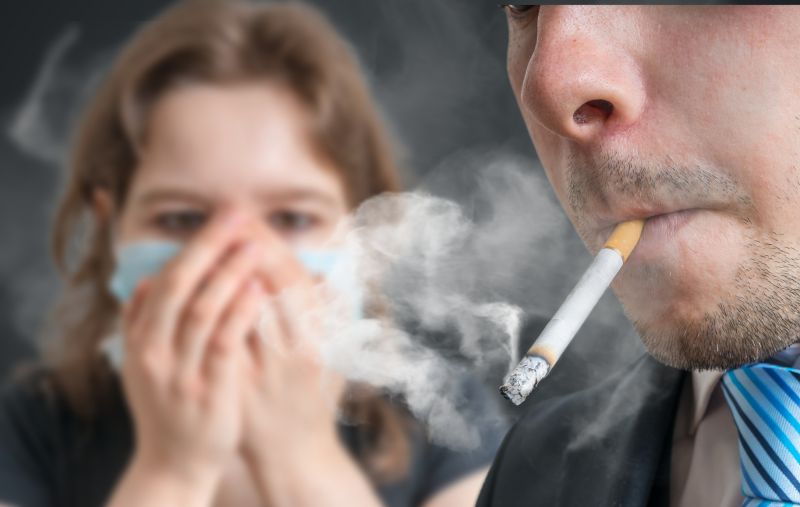Favorite Tools For Smoke Remediation Service Tasks
Browse essential equipment trusted by professionals to efficiently eliminate smoke odors and residues.
 Smoke remediation is a critical process for restoring indoor air quality after fire incidents, cigarette smoke, or other sources of airborne contaminants. Effective smoke remediation products are designed to neutralize, absorb, or eliminate smoke odors and pollutants, helping to create a healthier living or working environment. These products vary widely in their application methods, coverage areas, and specific functionalities, making it important to select the right tools for each unique situation.
Smoke remediation is a critical process for restoring indoor air quality after fire incidents, cigarette smoke, or other sources of airborne contaminants. Effective smoke remediation products are designed to neutralize, absorb, or eliminate smoke odors and pollutants, helping to create a healthier living or working environment. These products vary widely in their application methods, coverage areas, and specific functionalities, making it important to select the right tools for each unique situation.
Top Overall Option
High-Performance Air Purifier with Activated Carbon and HEPA Filters
This versatile air purifier combines advanced filtration technologies to effectively reduce airborne smoke particles and odors. Its multiple filtration stages include a HEPA filter for particulate removal and an activated carbon filter for odor absorption, making it suitable for various indoor environments. Easy to operate and maintain, it provides continuous air quality improvement, making it a practical choice for smoke remediation efforts.
Types of Products For Smoke Remediation Service
HEPA Air Purifiers
Devices equipped with HEPA filters to trap smoke particles and improve air quality.
Activated Carbon Air Filters
Filters designed specifically to absorb odors and chemical residues from smoke.
Ozone Generators
Devices that produce ozone to neutralize smoke odors, typically used in unoccupied spaces.
UV Light Sterilizers
Equipment that uses ultraviolet light to kill bacteria and reduce airborne contaminants.
Smoke Odor Absorbing Gels
Gels that absorb and neutralize smoke odors in localized areas.
Thermal Fogging Machines
Devices that disperse deodorizing agents evenly throughout a space for thorough odor removal.
Surface Cleaning Solutions
Specialized cleaners formulated to remove smoke residues from walls, furniture, and surfaces.
Electrostatic Sprayers
Tools for applying disinfectants and deodorants evenly across surfaces and air.
Air Quality Monitors
Devices that measure particulate levels and odors to assess remediation effectiveness.
Odor Neutralizing Sprays
Sprays designed to temporarily mask or neutralize smoke odors on fabrics and surfaces.
Negative Ion Generators
Devices that emit negative ions to help settle airborne particles and improve air clarity.
Portable Air Scrubbers
Compact units capable of filtering smoke particles and odors in small to medium spaces.
Porous Material Sealers
Sealants used to block smoke odors from penetrating porous surfaces like drywall or wood.
Deodorizing Foggers
Automated devices that release deodorizing agents into the air for comprehensive coverage.
Air Exchange Ventilators
Systems that increase airflow to dilute and remove smoke contaminants from indoor spaces.
Popular Choices
Highly regarded for their combination of filtration technologies to address smoke particles and odors.
Frequently used in professional remediation for their ability to eliminate stubborn smoke smells.
Popular for their strong odor absorption capabilities in larger or heavily affected spaces.
Trusted for reducing airborne bacteria and improving overall air hygiene.
Commonly chosen for their ease of use and ability to improve air clarity in small areas.
Effective for treating furniture, fabrics, and other surfaces affected by smoke.
Valued for their ability to reach hidden areas and porous materials.
Popular for assessing air conditions before and after remediation efforts.
Chosen for their efficiency in applying disinfectants and deodorants evenly.
Convenient for localized odor control in confined spaces.
Widely used for their ability to improve air freshness and reduce airborne particles.
Popular for their high airflow and filtration capacity in remediation projects.
Often selected to prevent residual odors from penetrating deeper into materials.
Preferred for their ability to deliver consistent deodorization coverage.
Many smoke remediation solutions focus on air purification, employing technologies such as activated carbon filters, ozone generators, or UV light sterilizers. Air purifiers equipped with HEPA and activated carbon filters are common choices for ongoing odor control and particulate removal. For more intensive remediation, ozone generators can effectively neutralize stubborn odors but require careful handling and proper ventilation during use.
In addition to air purifiers, there are surface cleaning products designed to treat walls, furniture, and other affected surfaces. These are formulated to break down smoke residues and prevent lingering odors. For comprehensive remediation, some professionals utilize specialized fogging or thermal fogging devices that disperse deodorizing agents evenly throughout a space, reaching hidden crevices and porous materials.
Choosing the right smoke remediation products depends on the severity of contamination, the size of the space, and specific safety considerations. Proper use and adherence to manufacturer instructions are essential to ensure effective results and safe operation. Combining multiple types of products can often provide a more thorough approach, especially in cases of severe smoke damage or long-standing odors.
Key Buying Considerations
- Assess the severity and extent of smoke damage to determine appropriate product types.
- Consider the size of the space to select devices with adequate coverage capacity.
- Evaluate the filtration efficiency for airborne particles and odors.
- Check safety features and operational guidelines, especially for ozone generators and foggers.
- Determine ease of use and maintenance requirements of the products.
- Review the compatibility of products with existing ventilation and air circulation systems.
- Identify whether surface cleaning or deep fogging is necessary based on contamination levels.
- Look into product certifications and compliance with safety standards.
- Consider the noise levels of air purifiers and other equipment for comfort during operation.
- Evaluate the availability of replacement filters and consumables.
- Think about the potential need for professional assistance for complex remediation tasks.
- Assess the time frame for achieving desired air quality improvements.
- Review customer feedback and product performance ratings for reliability insights.
- Determine if multi-functional devices that combine several technologies suit your needs.
- Ensure proper handling and safety measures are understood for ozone and fogging devices.
